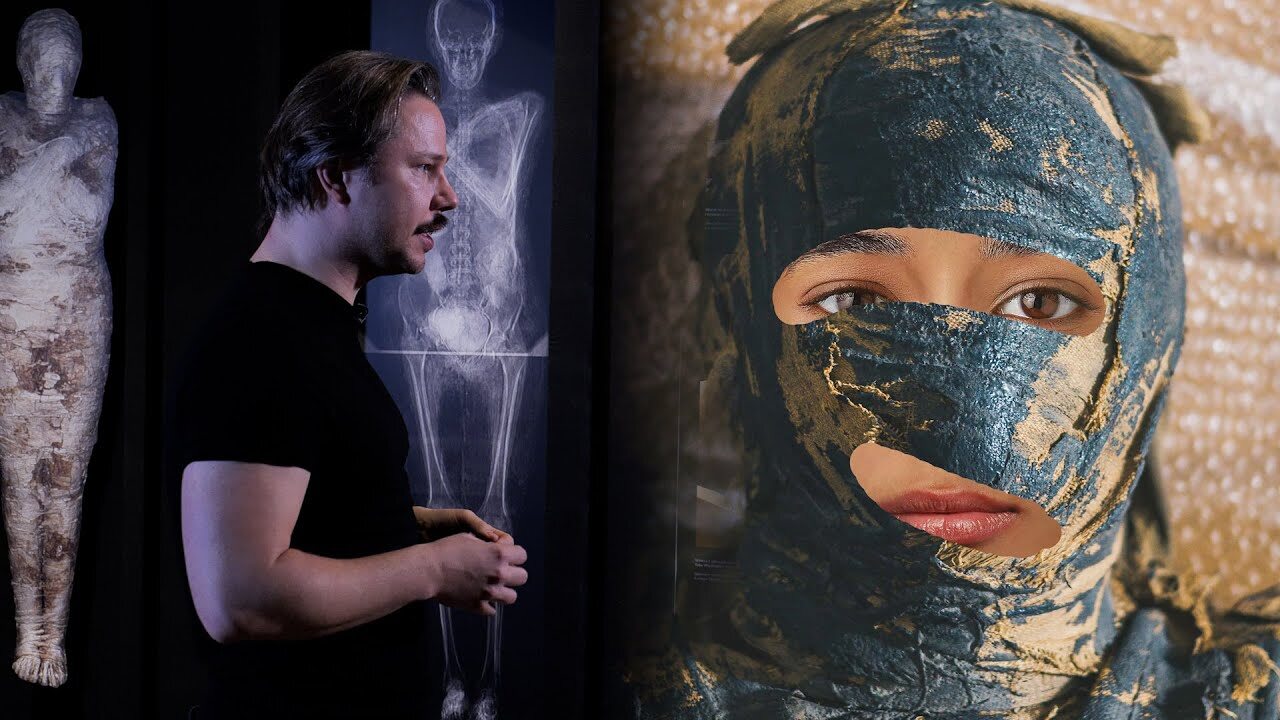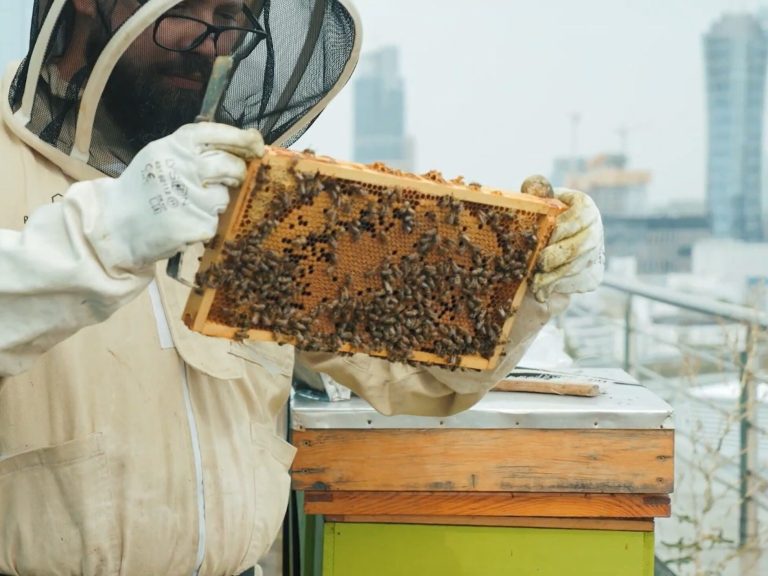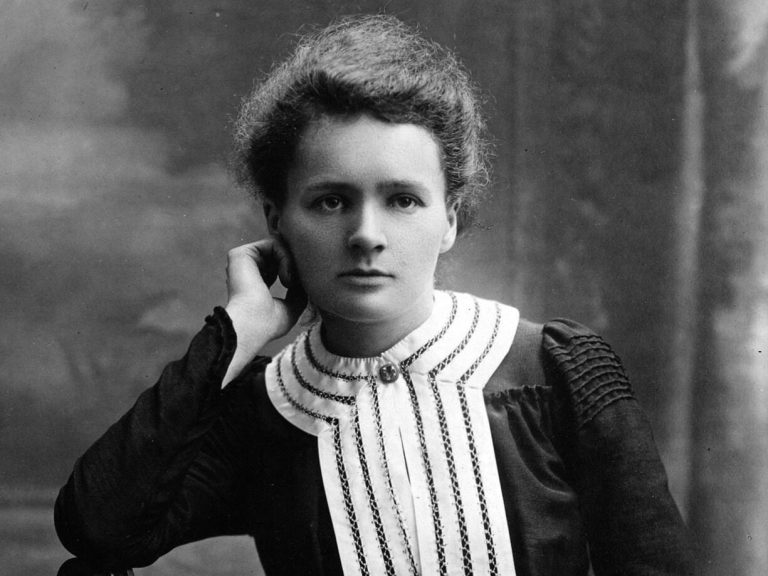Modern research reveals the secrets of the mummy. “It’s better to overexpose them than to develop them”

Scientists from the Warsaw Mummy Project study mummies stored in the National Museum in Warsaw using modern, non-invasive methods. They prove that one of the mummies, which was initially thought to be the body of a priest, contains the remains of a fetus. – We have opened a completely new field for research – emphasizes Dr. Wojciech Ejsmond in an interview with “Wprost”.
Research on mummies stored in the National Museum in Warsaw, conducted by scientists from the Warsaw Mummy Project, has been ongoing since 2015. As part of the “Science is a Polish Specialty” series, we visited the exhibition “The Mummy of a Mysterious Lady. Studies and Perspectives” presented at the Silesian Museum in Katowice.
The exhibition presents the most important information and curiosities about Egyptian mummies, including the embalming process, showing the tools and substances that were used for it. In addition to the many presented photos and recordings showing the work of the Warsaw Mummy Project team, the exhibition also includes amulets recreated using computed tomography and printed in 3D, or an exact model of the skull of one of the mummies. The exhibition also includes a mummy hologram made on the basis of tomography scans.
Among the photos and scans shown, there were also facial reconstructions of the mummy made by specialists in forensic anthropology and forensic science.
Non-invasive research of Warsaw mummies
At the exhibition at the Silesian Museum, we met Dr. Wojciech Ejsmond, an archaeologist from the Warsaw Mummy Project, who told us about the work of his team.
– The Warsaw Mummy Project is an interdisciplinary project aimed at examining all Egyptian mummies in the collection of the National Museum in Warsaw says Dr Ejsmond. – We have currently examined approximately 43 Egyptian mummies, both human and animal. We have mummies of cats, rams, ibises and falcons she lists.
In total, more than 20 scientists participated in the research. – I lead the research together with Marzena Ożarek-Szilke. We have specialists from Italy, France and of course from Poland from various scientific units. The research includes egyptologists, archaeologists, doctors and criminologists – pointed out the co-leader of the project.
Dr. Ejsmond argues how useful it is to use modern methods in the study of mummies.
– The research, which began in 2015, includes CT scans and X-rays that allow us to look inside mummies, even perform autopsies without touching them. It is better to x-ray the mummy than to develop it. Evolving the mummy would cause it to be destroyed. And our research is non-invasive the scientist emphasizes. – We see how the bandages are wrapped around the body, we see the skin, the bones, how the internal organs have been put back into the body in some cases. Thanks to X-ray images, we can look at the structure of bones, look for developmental pathologies, diseases and other things that can tell us how these people lived, at what age they died, what was their gender, what diseases they suffered from she lists.
Mysterious Lady
The mummies studied by the Warsaw Mummy Project came to Poland in the 19th century. The first of them appeared in the collection of the University of Warsaw at the turn of 1826 and 1827, when it was brought from Egypt by Jan Wężyk-Rudzki. It was supposed to come from the great pyramid at Giza or from the royal tombs at Thebes.
– The latter option is more likely, because the mummy arrived in the sarcophagus of priest Hor-Djehuti. During the research of scientists from the University of Warsaw, it turned out that the alleged mummy of Hor-Dżehuti is the mummy of a woman. This was the first such “wow” in our research – reveals the archaeologist. – Later analysis showed that the mummified body was a pregnant woman. When Marzena was looking at X-rays and CT scans, she saw a strange object in her pelvis. She looked at the cross-sections and consulted the obstetrician-gynecologist, who confirmed her assumption that it was a pregnancy says Dr Ejsmond.
The team’s research shows that the mummified woman died between the ages of 20 and 30, being between 26 and 30 weeks pregnant. There are many factors that can lead to pregnancy.
– She has a closed cervix, the object in her pelvis is of a uniform structure, surrounded by soft tissue – says Dr Ejsmond. – Moreover, the woman suffered from lordosis, a disease that often occurs during pregnancy. She has a typical pregnancy belly, a little thicker skin on the sides and thinner under the belly button. And the amulets placed on the mummy were placed in a rather unusual way. As a rule, amulets depicting the four sons of Horus were placed in a horizontal or vertical row on the chest. Our mummy has them around her belly – they were supposed to protect what’s inside. So maybe they were supposed to protect the fetus? the scientist wonders.
And how did the remnants of the fetus survive in the mummy? – Complicated and not yet fully understood decomposition processes inside the mother’s body took place. It should be remembered that at the time of death the pH of the blood changes, the blood becomes more acidic, the amniotic fluid turns sour, the environment was generally acidic. This promotes the preservation of soft tissue, but can dissolve bones – explains the archaeologist. – Keep in mind that this is a small research facility and has been through a lot. The fact that it was possible to observe it is an extraordinary luck. It would not have been possible without high-quality equipment and excellent CT images he adds.
The results of their research, showing that the mummy has a few-month-old fetus inside, were published by the researchers in April 2021 in the journal “Journal of Archaeological Science”, which caused extraordinary interest in the scientific world. The study was also controversial. In July 2022, a publication appeared in “Archeological and Anthropological Sciences”, in which another team questioned the findings of finding the fetus.
– Our discovery of a pregnant mummy is the first journal-published case of an ancient Egyptian pregnant mummy. Our further consultations with specialists showed that such mummies had been found, but no studies had been published about them. It was a topic hitherto unexplored in science says Dr Ejsmond. – This topic drew the attention of researchers to a previously overlooked aspect of the Egyptian religion. What happened to the souls of unborn children? How did the Egyptians approach the death of a pregnant woman? What were the funeral customs for young children and women who died while pregnant or shortly after giving birth? We have opened a completely new field for research – underlines.
Warsaw Mummy Project: We want to rehumanize mummies
Dr. Ejsmond also explains the purpose of reconstructing her face, in addition to knowing the appearance of the mummified woman.
– Reconstructing faces helps to show mummies not as museum objects, but as loving and loved people who had their own stories, whose death was a tragedy for their loved ones. In this way, we want to rehumanize mummies and show them not as curiosities behind glass, but as once-living people – says.
Researchers from the WMP announce further, thorough examination of the mummy. – We don’t know the woman’s name. We’re still trying to figure that out. We named her the Mysterious Lady because of the secrets she slowly reveals. We won’t know all of them for sure, but it’s worth keeping your fingers crossed for our research says Dr Ejsmond.
The archaeologist also points out that one of the secrets is the death of the woman herself. – It is still unclear how the Mysterious Lady died. Analysis of the skull bones indicates that she may have had cancer. But we’re not 100% sure, so it’s open says Dr Ejsmond. – We would like to perform micro-invasive examinations of the mummy, take soft tissue samples and learn more about her health, past illnesses, her diet and many other things that can be found there. We still have a lot of work to do he adds.
Dr. Ejsmond also announces research on other mummies. – We have at the workshop, for example, the mummy of Panepi, the so-called child’s pseudo-mummy he reveals.






